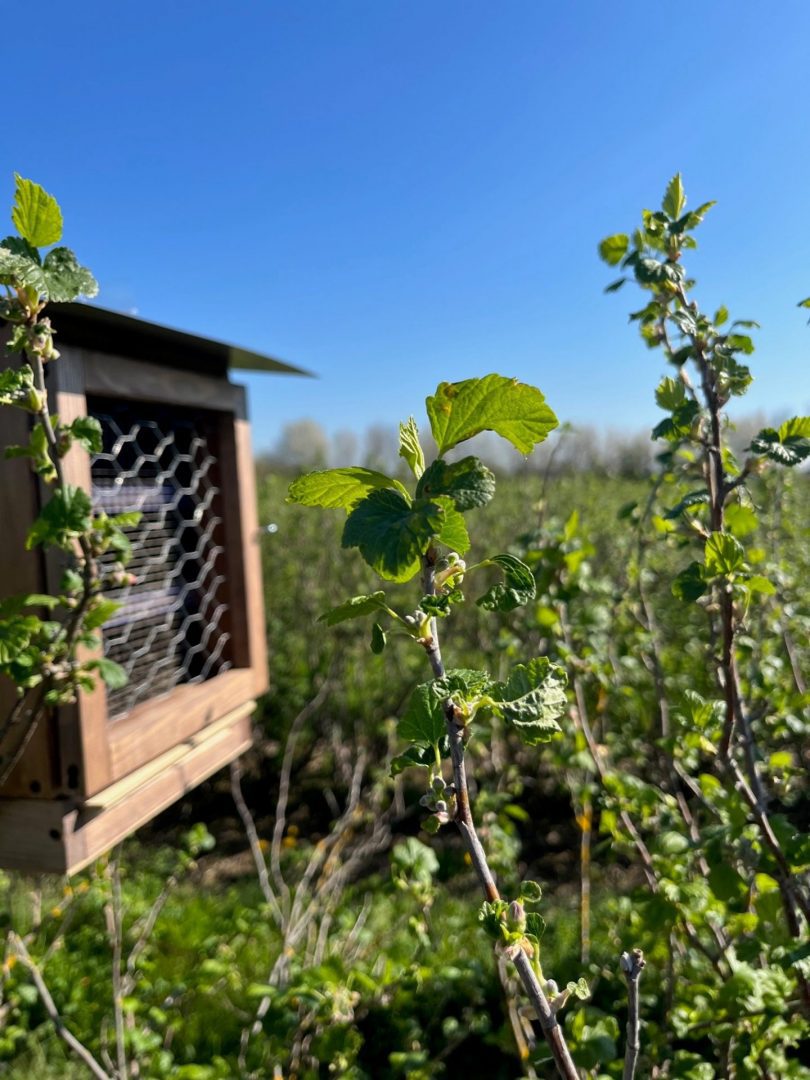
For the past two years, Florent Baillard, a blackcurrant producer in Merceuil in the Côte-d’Or, has been installing bee hotels. It’s not a question of a hive, but rather a bee hotel. Indeed, these wild bees do not produce honey. So why should we be interested in bees if not for the honey?
Florent Baillard cultivates the blackcurrant variety “Noir de Bourgogne”. According to all blackcurrant experts, the “Noir de Bourgogne” variety is the best blackcurrant variety. Unfortunately, this variety is susceptible to diseases and its yields are lower than the ‘blackdown’ in particular. To improve fruit yields, pollination of blackcurrant flowers is essential. Indeed, if the flower is pollinated, a blackcurrant berry appears. The presence of pollinators and insects in the fields allows the fruit to develop. The solution seems simple. Why not simply install beehives in the fields to encourage pollination?
Installing a beehive in a blackcurrant field allows honey to be collected and improves the pollination of blackcurrant flowers. Yes, that is the theory. In reality, the bees travel up to 3 km to get supplies. This means that blackcurrant flowers compete with other flowers, such as rape. The bees often prefer other flowers. Thus, the interest of hives in blackcurrant fields seems to be less. Florent Baillard’s challenge: to find the insect that will be interested in his blackcurrants.
After several years of research, Florent Baillard seems to have found the Holy Grail.
The wild bee does not make honey. However, it does play a role in pollinating flowers. This bee is particularly interesting because its flight radius is 80 metres! Thus, when implanted in the heart of the field, it stays in the desired plot. To ensure that the bee has sufficient food, Florent installs flower strips between the blackcurrant plants. These flowers are carefully selected to bloom after the blackcurrant. The aim is to avoid competition with the blackcurrant, of course.
The wild bee or osmia has a life span of 3 months. The blackcurrant flowers in Burgundy in mid-April. It is therefore installed in the fields at this time. The female lays several eggs which are collected before the blackcurrant harvest. At the beginning of July, the hotels are removed and the eggs are collected. Over a period of about 10 months, the young bees develop: the egg becomes a larva and the larva becomes a cocoon. The osmia spends the winter inside its cocoon. The following year, in the spring, the hotel and cocoons are again installed for a new cycle. This is how the life of bees goes. Thanks to them, Florent Baillard hopes to increase his yields by 10 to 15%.
At Briottet, we only use the “Noir de Bourgogne” variety for its unequalled aromatic qualities. A good fruit in large quantities ensures an exceptional crème de cassis. All the blackcurrant berries used for Briottet’s crème de cassis come from the Côte-d’Or. We are therefore very interested in all new responsible agricultural practices in favour of blackcurrant production in Burgundy. We are proud and attached to a local supply. This approach of installing bees in the blackcurrant fields promotes biodiversity. It is completely in line with our values of sustainable development and respect for the environment. We can only welcome this trial. Moreover, we are delighted that 5 other producers in Burgundy are trying the experiment in turn this year. The movement is underway!

